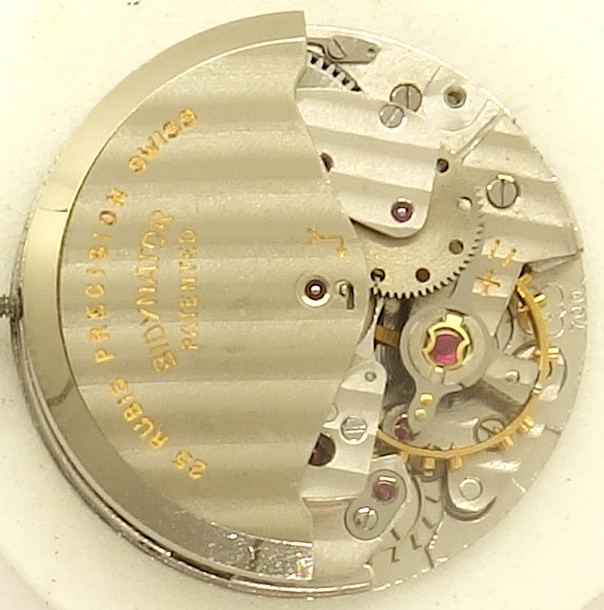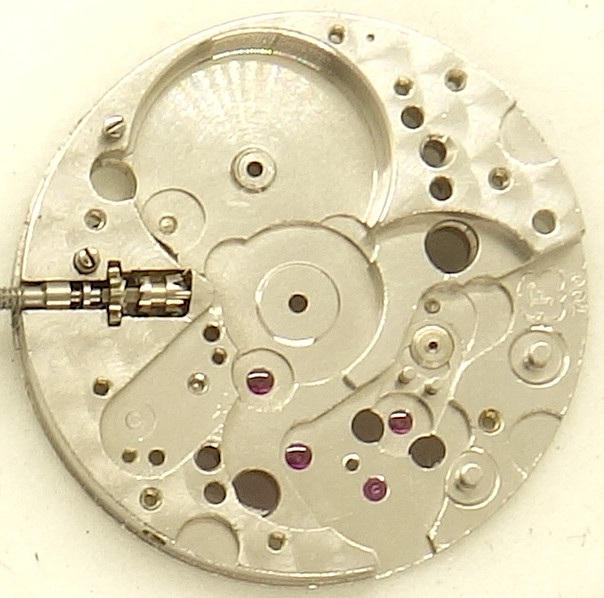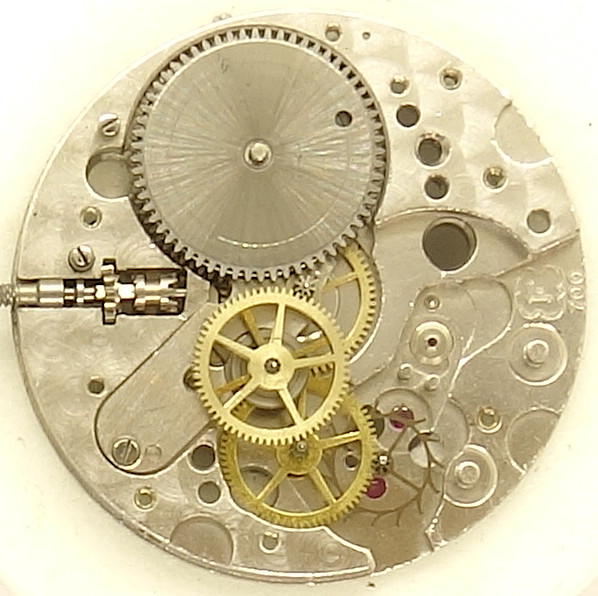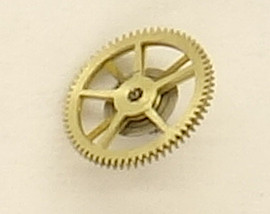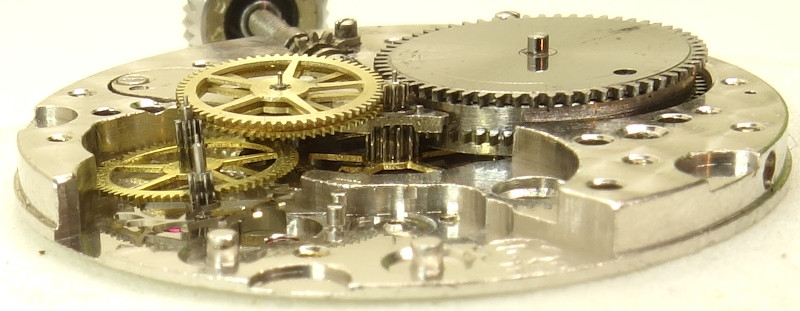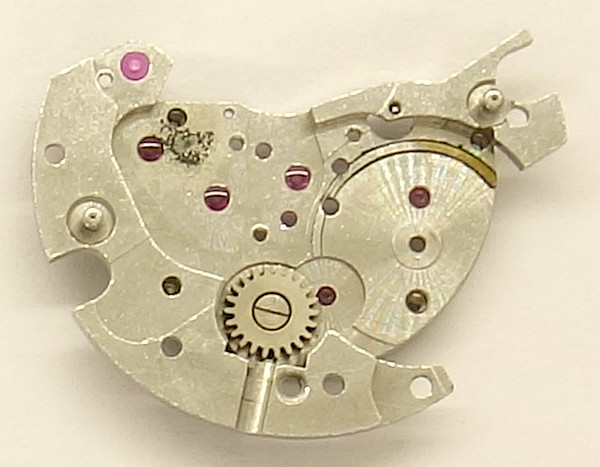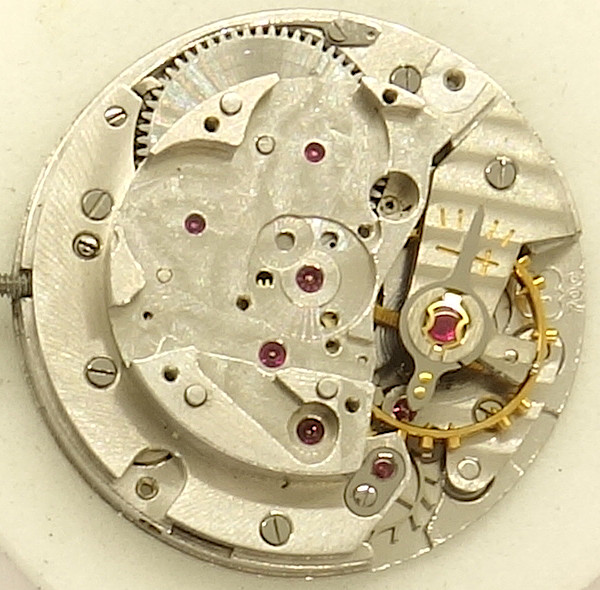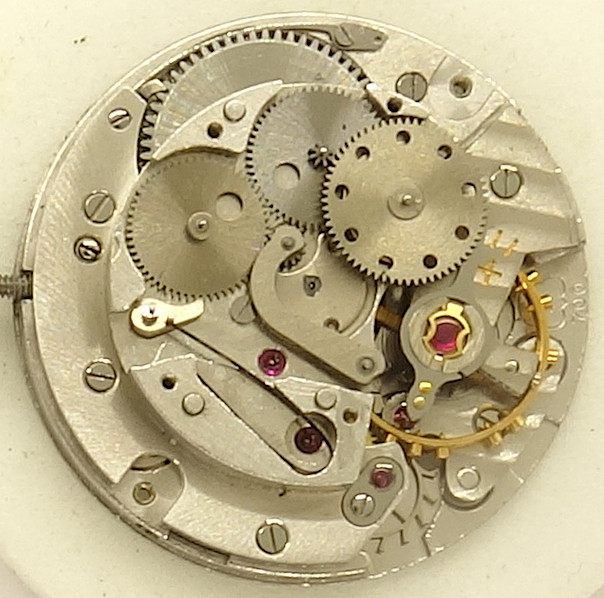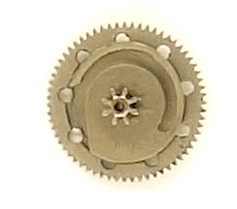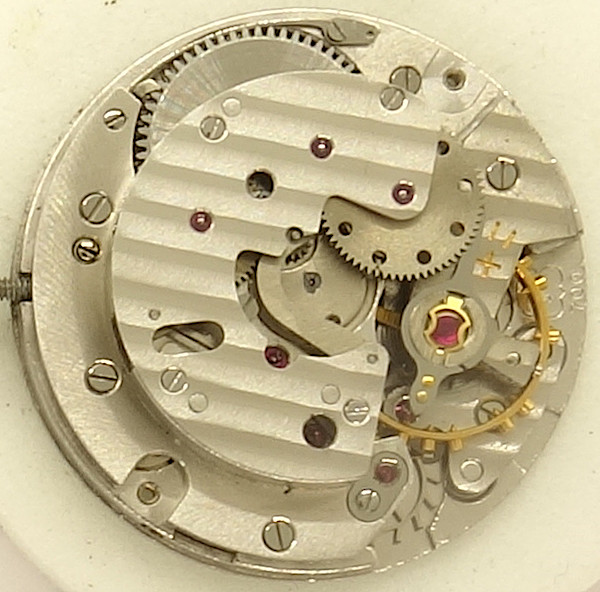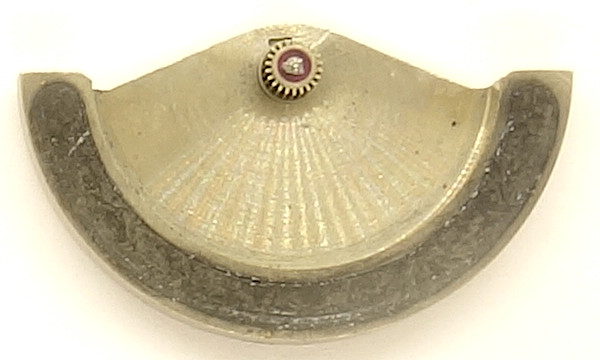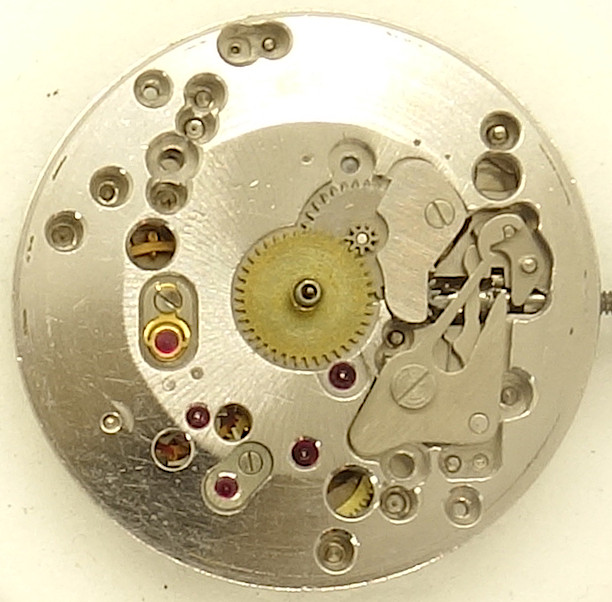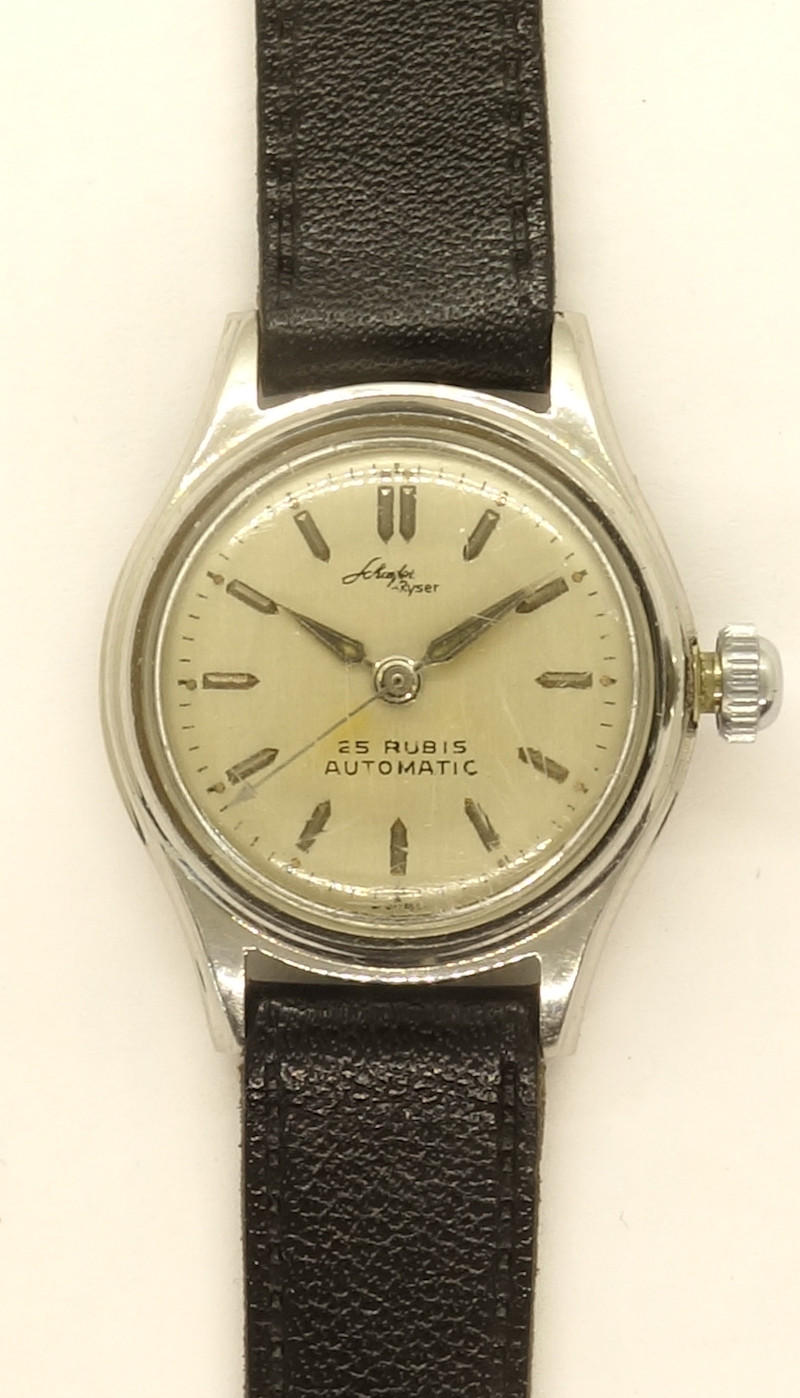Description
Felsa only offered two series of ladies’ selfwinding calibers, the series 380 and the series 700.
Th Felsa 700 of the second and last caliber series with rather small with a diameter of 9 1/4 lignes, but it was not the smallest selfwinding movement on the market.
It’s construction is pretty similar to that of its larger brother, the caliber 690.
Of course all important bearings contain rubies, here even bombed.
The non jewel-beared center minute wheel is located under an own cock.
The Felsa 700 uses the classical gear train with directly driven center minute wheel, third wheel (here a double one), seconds wheel and escape wheel.
The double third wheel drives the indirect center second hand and avoids its fluttering.
As regulating device, a very beautiful, golden-toned two-leg
Glucydur screw balance is used, which beats slowly with 18000 A/h.
Its exact frequency can be adjusted with the help of a long regulator arm.
Two Incabloc shock protections protect the sensitive balance staff against bumps.
For reasons of space, there is only one bridge under which both the complete gear train and the mainspring barrel are beared. In addition, that is also the crown wheel mounted on the inside of this bridge.
On the top of the gear train bridge you can already see the bearings and recesses for the selfwinding mechanism.
As with the “large” Felsa automatic movements, a lever changer is used. Depending on the direction of rotation, it acts on one of the two connected change gears, so that, supported by the pawl on the left change wheel, the right change wheel always rotates in the same direction and over the following multi-plate clutch wheel winds up the barrel wheel.
To disengage the automatic mechanism when winding by hand, the last reduction gear carries a multi-plate clutch. When it rotates in one direction (winding by the rotor) it transmits the power from the outer ring gear to the inner pinion, but it runs freely in the opposite direction (hand winding).
Unfortunately, the rotor axis is broken in this example, but you can clearly see where it would be.
However, the striped decoration of the work is impressive.
The rotor is axle-beared (in a ruby) and has in its outer segment a heavy metal inclusion, probably lead.
On the dial side, the Felsa 700 is quite unspectacular, except for the cap jewel of the escapement wheel bearing (at 6:30 o’clock) and the flat Incabloc bearing (at 9 o’clock).
Of course, this movement uses a yoke winding system, and to save height (at 5.3mm it is relatively high), the edge of the dial side is beveled.
Technical data
| Manufacturer: | Felsa |
| Caliber: | 700 |
| Size: | 9 1/4''' (measured: 21,0mm) |
| Height: | 5,43mm |
| A/h: | 18000 |
| lift angle: | 52°? 52.28°? |
| Number of jewels: | 25 |
| Escapement: | Pallet lever |
| Balance types: |
Glucydur screw balance (two legs) |
| Shock protection(s): |
Incabloc |
| Balance bearing / direction hairspring: | Clockwise |
| Moveable stud: | no |
| Adjust mechanism: | Long regulator arm |
| Construction: |
|
| Construction type: | solid construction |
| Winding mechanism: | yoke winding system |
| Setting lever spring: | 2 hole(s) |
| Features: |
|
| References: |
Ebauches: 1953 41 Feilner: 65 6350a Flume: K1 - |
| Mentioning in literature (years): | 1959 |
| Inventory number: | 22001 |
